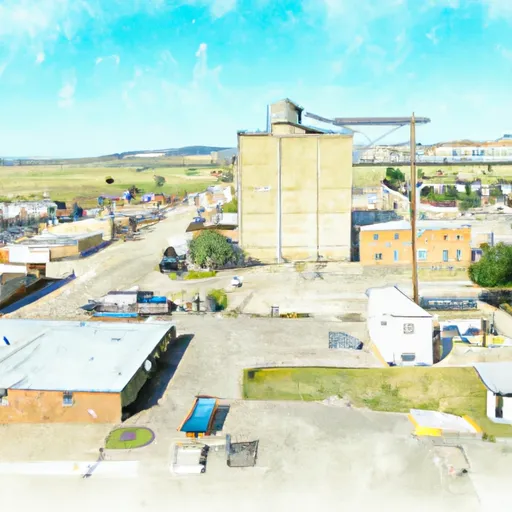-
 Snoflo Premium
Snoflo Premium
Get unlimited access to all our content
With no Ad interruptions! - Start Your Free Trial Login with existing account
Walcott
Eden Index
Climate
6.8
•
Recreation
2.2
•
Community
•
Safeguard
3.5/10

Walcott, Wyoming is a small town situated in the Rocky Mountain region of the United States. The town experiences a cool and dry climate, with cold winters and mild summers. Average temperatures range from 10°F (-12°C) in winter to 75°F (24°C) in summer, making it ideal for outdoor activities throughout the year.
Hydrologically, Walcott is surrounded by several pristine water bodies. The nearby Snake River, known for its exceptional fly fishing, is a popular spot for anglers seeking trout and other freshwater fish. Additionally, the town is close to several lakes and reservoirs, offering opportunities for boating, kayaking, and swimming. The region's hydrology is also influenced by snowmelt from the surrounding mountains, which provides a steady water supply for the agricultural activities in the area.
In terms of outdoor recreation, Walcott offers a wide range of activities for nature enthusiasts. The surrounding mountains provide ample opportunities for hiking, mountain biking, and rock climbing. Wildlife enthusiasts can enjoy birdwatching, as well as the chance to spot elk, moose, and other wildlife. During winter, the area transforms into a winter wonderland, attracting skiers, snowboarders, and snowmobilers to its slopes and trails. With its diverse outdoor recreation opportunities and beautiful natural surroundings, Walcott, Wyoming is a haven for those seeking an active and adventurous lifestyle in a stunning setting.
What is the Eden Index?
The Snoflo Eden Index serves as a comprehensive rating system for regions, evaluating their desirability through a holistic assessment of climate health, outdoor recreation opportunities, and natural disaster risk, acknowledging the profound impact of these factors on livability and well-being.
Climate Health Indicator (CHI): 6.8
Walcott receives approximately
277mm of rain per year,
with humidity levels near 65%
and air temperatures averaging around
6°C.
Walcott has a plant hardyness factor of
5, meaning
plants and agriculture in this region thrive during a short period during spring and early summer. Most
plants will die off during the colder winter months.
By considering the ideal temperature range, reliable water supplies, clean air, and stable seasonal rain or snowpacks, the Climate Health Indicator (CHI) underscores the significance of a healthy climate as the foundation for quality living.
A healthy climate is paramount for ensuring a high quality of life and livability in a region, fostering both physical well-being and environmental harmony. This can be characterized by ideal temperatures, reliable access to water supplies, clean air, and consistent seasonal rain or snowpacks.
Weather Forecast
Streamflow Conditions
North Platte
Area Rivers
North Platte
Snowpack Depths
North Platte
Reservoir Storage Capacity
North Platte
Groundwater Levels
Recreational Opportunity Index (ROI): 2.2
The Recreational Opportunity Index (ROI) recognizes the value of outdoor recreational options, such as parks, hiking trails, camping sites, and fishing spots, while acknowledging that climate plays a pivotal role in ensuring the comfort and consistency of these experiences.
Access to outdoor recreational opportunities, encompassing activities such as parks, hiking, camping, and fishing, is crucial for overall well-being, and the climate plays a pivotal role in enabling and enhancing these experiences, ensuring that individuals can engage in nature-based activities comfortably and consistently.
Camping Areas
| Campground | Campsites | Reservations | Toilets | Showers | Elevation |
|---|---|---|---|---|---|
| Fremont Canyon - Alcova Reservoir | None | 5,503 ft | |||
| Encampment River | 8 | 7,307 ft | |||
| Bottle Creek | 16 | 8,722 ft | |||
| Bennett Peak | 11 | 7,137 ft | |||
| Saratoga Lake Campground | 50 | 6,795 ft | |||
| Kortes Reservoir Miracle Mile Dispersed | None | 5,925 ft | |||
| Prior Flat | 15 | 7,719 ft | |||
| Seminoe State Park | 95 | 6,418 ft | |||
| Bishops Point - Pathfinder Lake | 40 | 5,870 ft | |||
| Encampment City Park | None | 7,277 ft |
Nearby Ski Areas
Catastrophe Safeguard Index (CSI):
The Catastrophe Safeguard Index (CSI) recognizes that natural disaster risk, encompassing floods, fires, hurricanes, and tornadoes, can drastically affect safety and the overall appeal of an area.
The level of natural disaster risk in a region significantly affects safety and the overall livability, with climate change amplifying these risks by potentially increasing the frequency and intensity of events like floods, fires, hurricanes, and tornadoes, thereby posing substantial challenges to community resilience and well-being.
Community Resilience Indicator (CRI):
The Community Resilience Indicator (CRI) recognizes that education, healthcare, and socioeconomics are crucial to the well-being of a region. The CRI acknowledges the profound impact of these elements on residents' overall quality of life. By evaluating educational resources, healthcare accessibility, and economic inclusivity, the index captures the essential aspects that contribute to a thriving community, fostering resident satisfaction, equity, and social cohesion.

